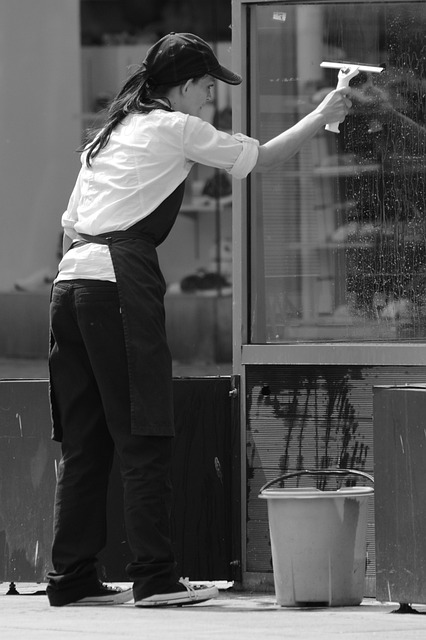Understanding floor types dictates unique cleaning approaches for optimal results. Hardwood requires gentle dry mopping, tile & vinyl tolerate aggressive cleaning, carpets demand specialized attention. Regular floor cleaning prevents damage, promotes health, and extends flooring lifespan. Using correct cleaners, deep cleaning techniques, and prompt spill action preserves floors. Eco-friendly methods with natural, non-toxic cleaners reduce environmental impact. Customized stain treatment, regular vacuuming, and deep carpet cleanings maintain aesthetics and longevity.
Keeping your floors clean and in top condition is essential for any home or business. With various floor types, from hardwood to tile and carpet, understanding their unique cleaning needs is crucial. This comprehensive guide delves into the art of floor cleaning, offering insights on everything from identifying the right cleaning solutions to mastering deep cleaning techniques. Learn how to navigate the world of floor care with eco-friendly practices and expert advice for long-lasting results, ensuring your floors remain a stunning centerpiece.
Understanding Different Floor Types and Their Cleaning Needs
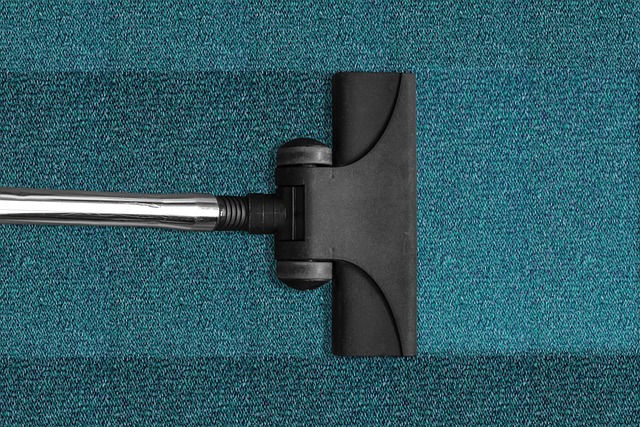
When it comes to floor cleaning, understanding the unique needs of different floor types is essential for maintaining their longevity and aesthetics. Hardwood floors, for instance, require a delicate balance between thorough cleaning and preserving their finish. Moisture should be kept at bay to prevent damage, hence dry or dust mopping is often recommended. Tile and vinyl floors, on the other hand, can withstand more aggressive cleaning methods due to their durable nature. Regular deep cleaning with suitable detergents will keep them in pristine condition.
Carpets present a different challenge altogether. Being soft and absorbent, they accumulate dirt, dust, and even moisture, which can lead to mold growth if not addressed promptly. Regular vacuuming is crucial for carpet maintenance, but for deeper cleaning, specialized techniques like steam cleaning or hot water extraction are advised. These methods effectively remove deeply ingrained stains and odors while also minimizing the risk of fiber damage. Different floor types thus demand distinct approaches to floor cleaning for optimal results.
The Benefits of Regular Floor Cleaning
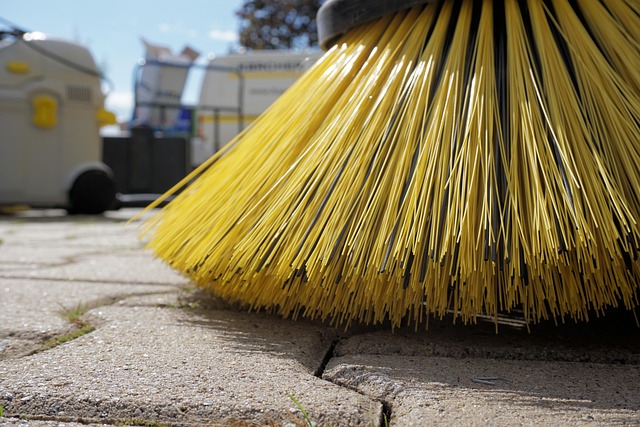
Regular floor cleaning offers numerous benefits that extend far beyond a sparkling, visually appealing space. By maintaining a clean floor, you’re actually investing in the longevity and overall health of your indoor environment. Dust, dirt, and debris can accumulate over time, leading to not only unsightly stains but also fostering the growth of allergens, bacteria, and even mold. These microscopic invaders can trigger allergies, respiratory issues, and other health problems for occupants, making consistent floor cleaning a must for maintaining a healthy living or working space.
Moreover, regular floor cleaning enhances the lifespan of your flooring materials. Different types of floors—be it hardwood, tile, carpet, or vinyl—require specific care routines to prevent damage. Proper cleaning methods and products can help preserve the integrity of these surfaces, saving you from costly repairs or premature replacements. A clean floor also contributes to a positive overall aesthetic, creating a welcoming and well-maintained atmosphere for both residents and guests alike.
Choosing the Right Cleaning Solutions for Optimal Results

When it comes to floor cleaning, selecting the appropriate cleaning solutions is key to achieving optimal results. Different carpets and floors require specific treatments, so understanding your surface is crucial. For example, vinyl floors need products designed for their durability, while wooden floors demand gentle yet effective cleaners to preserve their finish.
Using the right solutions ensures you don’t cause damage or leave unwanted stains. Enzymatic cleaners are excellent for removing tough dirt and odours in carpets, while pH-neutral detergents are ideal for various hard floor types. Always read labels and follow instructions to get the best out of your cleaning process.
Effective Techniques for Deep Cleaning Various Floor Surfaces
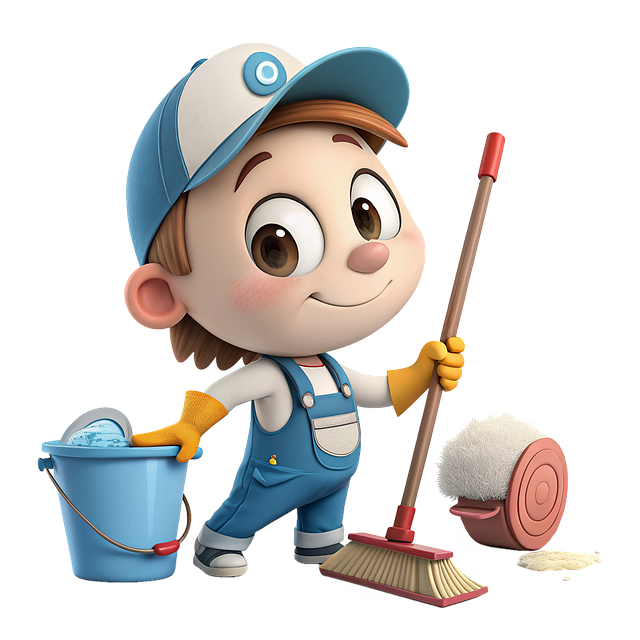
Deep cleaning is an essential part of maintaining a hygienic and aesthetically pleasing home, especially when it comes to various floor surfaces. For wooden floors, using the right cleaning solutions and avoiding excessive water is key; mopping with a microfiber cloth ensures minimal damage while effectively removing dirt. Tile and ceramic floors, on the other hand, benefit from a thorough scrub with a gentle detergent and a brush to dislodge stubborn stains. For areas with high foot traffic or prone to spills, regular sealing and polishing can create a water-repellent layer, making future cleaning easier.
Carpets demand a more meticulous approach; vacuuming is the first step to remove surface debris. Subsequently, deep cleaning methods like steam cleaning or hot water extraction are highly effective in eliminating embedded dirt and allergens. These techniques use high-pressure steam to loosen and wash away grime, leaving carpets fresh and clean. For harder-to-reach areas, spot cleaning with specialized solutions can target specific stains without damaging the carpet’s fibers. Regular floor cleaning not only maintains the aesthetics but also extends the lifespan of these surfaces, ensuring they remain in top condition for years to come.
Steam Cleaning: A Powerful Method for Sanitation and Hygiene
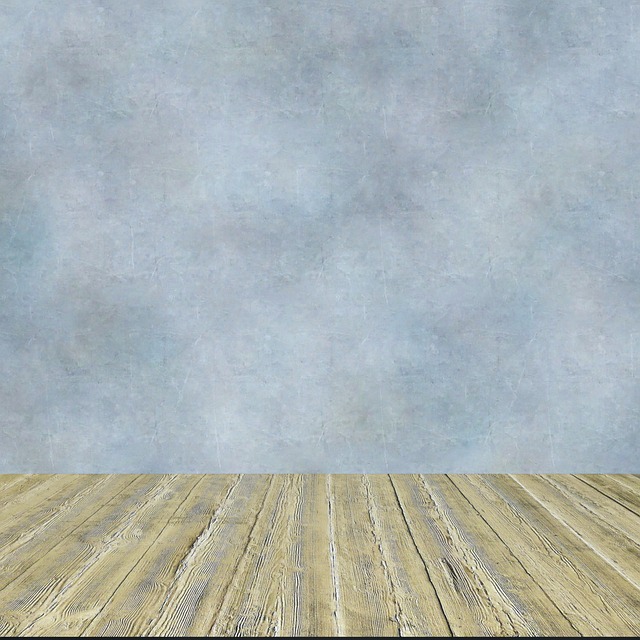
Steam cleaning has emerged as a powerful method for floor cleaning, offering unparalleled sanitation and hygiene benefits. This process involves infusing hot steam into carpet fibers or hard floor surfaces to effectively dislodge dirt, grime, and bacteria. The high temperature of the steam helps kill germs and reduces the need for harsh chemicals, making it an eco-friendly option.
Unlike traditional cleaning methods that may leave behind residue or moisture, steam cleaning quickly evaporates, ensuring floors dry promptly. This swift drying time is a significant advantage, especially in areas with heavy foot traffic where rapid floor recovery is essential. The result is a deep clean that leaves surfaces not only spotless but also hygienically safe for all occupants.
Common Floor Cleaning Mistakes to Avoid for Longevity
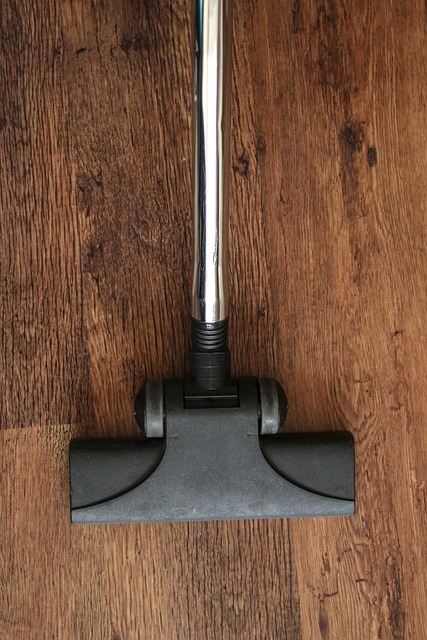
Many people overlook regular floor cleaning, leading to accumulated dirt and grime that can damage your carpets and hard floors over time. One of the most common mistakes is using the wrong cleaning tools or products for your flooring type, which can cause further wear and tear. For instance, using a bristled broom on delicate stone floors can leave scratches. Always identify your floor material and choose suitable cleaning methods accordingly.
Another error is neglecting to address spills promptly. Left untreated, liquid spills can soak into the fibers of carpets or penetrate the grout lines in tile and hardwood floors, causing permanent staining. Quick action with a clean cloth or absorbent material followed by a gentle cleaning solution specific to your flooring is crucial for longevity. Skipping deep cleaning sessions regularly is also detrimental; dust, allergens, and bacteria build-up can degrade your floor’s quality and impact indoor air quality.
Eco-Friendly Cleaning Practices for a Greener Home
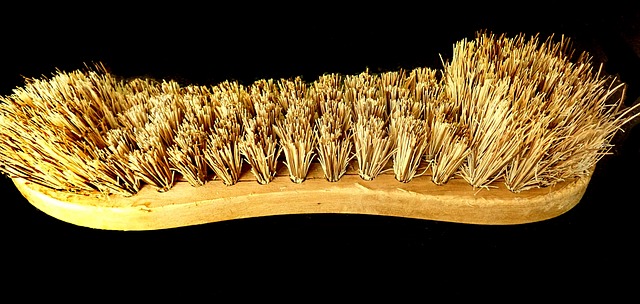
In the pursuit of a greener home, adopting eco-friendly cleaning practices is a significant step. When it comes to floor cleaning, natural and non-toxic cleaners are the way to go. Traditional cleaning products often contain harsh chemicals that can not only be harmful to your health but also detrimental to the environment. Luckily, there’s a growing market for green alternatives. Solutions like vinegar, baking soda, and essential oils offer powerful cleaning properties without leaving behind toxic residues or contributing to pollution.
These natural cleaners are not just safer for you and your family, but they’re also better for the planet. By eliminating harsh chemicals from your floor cleaning routine, you reduce water contamination and minimize your carbon footprint. Moreover, many eco-friendly products come in recyclable packaging, further contributing to sustainable living. Incorporating these practices into your daily floor cleaning regimen is a simple yet effective way to make your home more environmentally friendly.
How to Address Stains and Odor on Different Flooring Materials
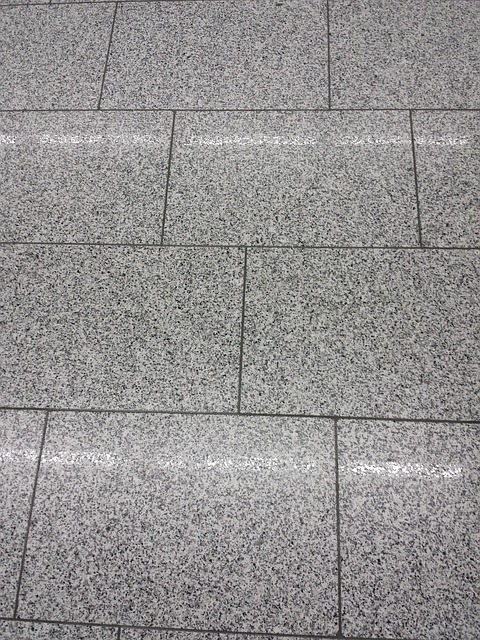
When it comes to tackling stains and odors on various flooring materials, a tailored approach is key. For example, carpet cleaning requires a different strategy than hard floor surfaces. For carpets, begin by blotting any liquid spills immediately to prevent setting. Then, use a suitable carpet cleaner – whether dry or wet – depending on the type of stain and carpet fiber. For hard floors, regular mopping with a mild detergent is often sufficient to remove everyday stains and odors. However, for stubborn marks, consider specialized cleaners designed for vinyl, wood, or tile, which can address unique care needs. Always test any cleaning solution in an inconspicuous area first to ensure it won’t damage the flooring material.
In addition to product selection, proper technique matters. Avoid excessive water on hard floors to prevent soaking and potential damage. For carpets, deep cleaning every 1-2 years helps remove accumulated dirt and odors, while regular vacuuming is crucial for maintaining the appearance and longevity of all floor types.
Maintenance Tips for Keeping Your Floors Looking New
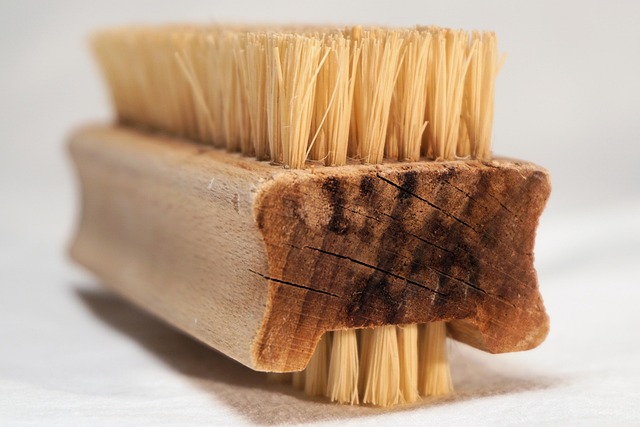
Regular floor cleaning is essential to maintaining the appearance and longevity of your carpets and floors. Daily vacuuming is a must, especially in high-traffic areas, to remove dirt, dust, and debris that can accumulate quickly. For deeper cleaning, consider steaming or extracting your floors weekly to eliminate embedded stains and odors.
Rotate your floor coverings periodically to prevent wear patterns from forming. This simple step ensures even exposure to sunlight and traffic, keeping your floors looking new for longer. Additionally, protect your floors by placing mats at entrances to minimize the track-in of mud, salt, and other outdoor elements that can damage or discolor your flooring.
